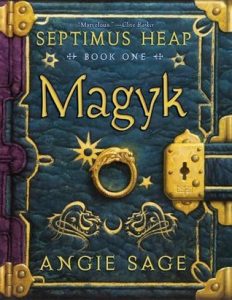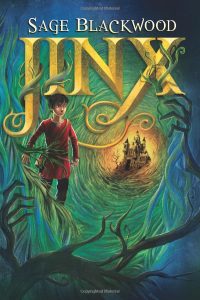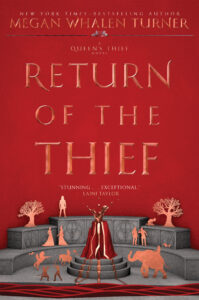
Just finished reading Leigh Bardugo’s RUIN AND RISING, the 3rd book of her Grisha trilogy. If you haven’t read it, go read. (Note: This is a YA, not a middle grade title.)
SPOILER ALERT.
Last night, I stopped reading at the end of Chapter 8. Earlier in the chapter, things are looking up for Alina. She takes definite steps to be less isolated from her friends. The reader thinks things are looking up. But after this scene of light and laughter, the friends leave, and there’s one little paragraph:
Later, I could never be sure if I’d done it deliberately, or if it was an accident, my bruised heart plucking at that invisible tether. Maybe I was just too tired to resist his pull. I found myself in a blurry room, staring at the Darkling.”
For whatever reason, Alina has decided to reach out to the antagonist, the Darkling, through the tie that binds them to each other.
This moment in the story felt so real because we all know what it’s like to do something stupid when we just should have gone to sleep. After reading this story moment, I couldn’t sleep either because I knew this decision would ruin her. My reader brain was busy trying to rescue her from this choice.
I almost didn’t pick up the book again the next day. But I was on a train to Cologne and it was on my e-reader. So I did. When the scene didn’t turn out the way I expected, I was so relieved.
So, how did Leigh Bardugo do that?
How did she make the reader SURE that something dreadful was going to happen, without a doubt, and then REVERSE, without losing credibility?
This morning, I finished RUIN AND RISING before I finished traveling, so I had time to ponder.
Megan Whalen Turner’s ATTOLIA series and Dorothy Dunnett’s LYMOND CHRONICLES (not middle grade) also have this trick of pivoting the whole story world on a character’s decision or a line of dialogue or an unexpected action.
Middle grade authors, Sage Blackwood and Angie Sage, also pull off this trick.
I really, really want the recipe.
Reversal ingredient list:
- Reader expectations about the main character’s choices. Which ones look good from a reader perspective?
- Consequences bubble up naturally early in the story. The reader experiences dread at the moment of choice rather than information overload.
- Tension: The chapter that follows this passage has a feeling of I-should-not-be-here-but-I’m-too-tired that creates forboding.
Mix in reader expectations to form a smooth batter. Let consequences ferment. Set story aside to rise. Fold in a challenging choice and bake in a hot oven until done.
And then there’s Author Brutality, a.k.a. making things worse.
In his WRITING THE BREAKOUT NOVEL workshops, superagent Donald Maass asks:
“What’s the worst thing that could happen to your main character?”
“It just happened.”
Collective groans and sounds of grief from writers killing off their main characters.
“Now–what happens next?”
Because whatever happens next HAS to be a reversal. The main character has gone as far as possible in the original direction.
Any thoughts about more essential ingredients? Do you like stories with reversals? If you feel like sharing, I‘d love to know your favorite examples. Send me a quick message.



